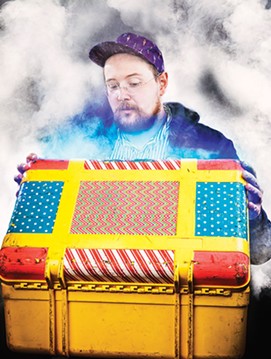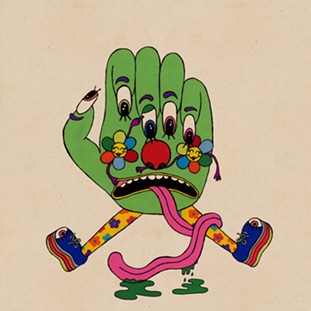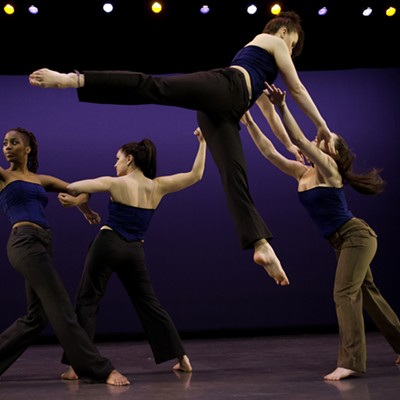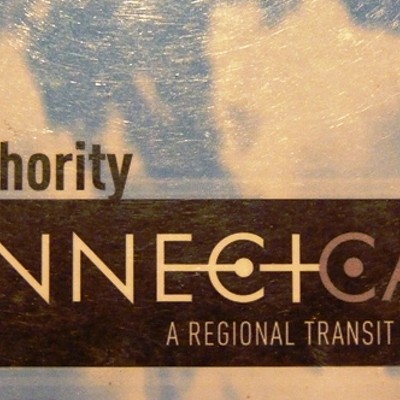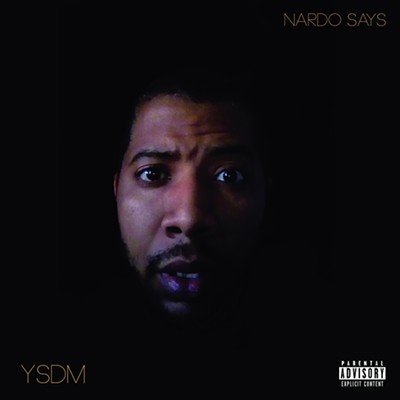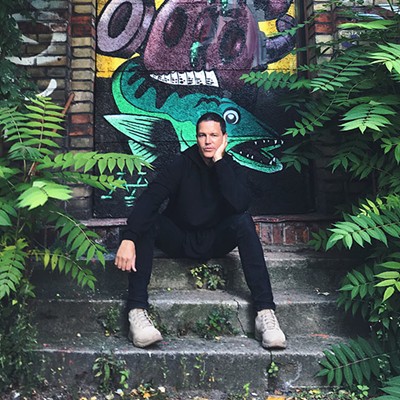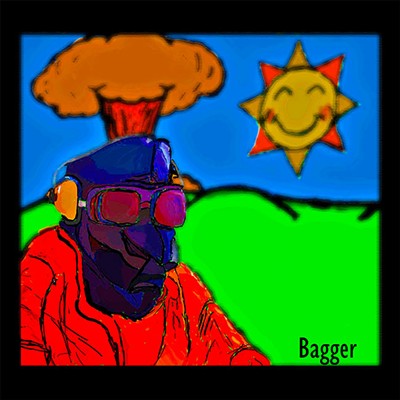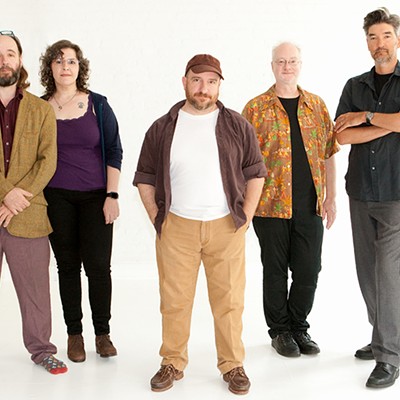Thursday, April 9, 2015
A Conversation with Dan Deacon
Dan Deacon is not a cartoon, nor a “cartoon-musician”, but his music does have a kind of fidgety high energy that feels, at the very least, animated. His songs are joyful, playful, and off-kilter, without any of the arm’s-length sarcasm that you might expect to find padding music this idiosyncratic.
Deacon is classified as an electronic musician, which is true in the sense that he is not a basketball coach or a librarian. But his version of electronic music is so unmistakably distinct, so thoroughly Dan Deacon, that it seems to require a term of its own (based off our conversation, probably not “cartoon-music”).
Now, after three critically-praised full-lengths and a steady rise on the margins of commercial indie, Deacon has returned with Gliss Riffer, his poppiest, friendliest record to date. It’s still Deacon, the pitch-warped voices and hyperactive structures are present as ever, but there’s a tidiness and concentration to the way the songs unfold that feels like brand new territory.
With Deacon returning to Mr. Smalls tonight, and a new video for “When I Was Done Dying,” out this month, CP caught up with the Baltimore-bred electronic musician over the phone to talk Gliss Riffer, Gooski’s, and cartoon music.
The last time you were in Pittsburgh (with Arcade Fire at Consol), you gave a shout-out to Manny Theiner for booking your first show here, at Garfield Artworks in the early 2000s. Can you tell me about that show?
All of the early Pittsburgh shows are kind of a blur, due largely to Lord Grunge, Grand Buffet and Greg Gillis. [We’d] go to Gooski’s afterwards and more trouble would ensue. Always a wild time with those guys, still is. Still love getting down to Gooski’s whenever I’m in “The Burgh.”
I think before Consol, the last proper Pittsburgh show I did was with Deerhunter and No Age at Mr. Smalls, so it’ll be nice to get back to Mr. Smalls. Those early Pittsburgh shows were fun because they were like... so...weird. Kind of felt like a parallel universe to Baltimore in a lot of ways, where Pittsburgh was like Baltimore without as much boarded up buildings and crime.
Yeah I’ve always thought Pittsburgh was more similar to Baltimore than to Cleveland or Philly. It’s like Baltimore without the harbor.
It’s like Baltimore without the good football team, too.
Whoa! …This week you released the video for “When I Was Done Dying.” Where did the idea to have different directors/animators come from?
Well, I guess that’s my one role in the video. When I made the song, it’s about like, a body drifting into different vessels and it’s this shifting, meandering consciousness before it slowly loses consciousness and becomes the new consciousness. I kept thinking how it could be interesting to make a video where every stanza, if you look at the lyrics, every breakdown of the verse, was animated by a different animator. Sort of like an ‘exquisite corpse’ style.
So I went to my friend Dave Hughes, who directed the “USA” video and has a show called "Off The Air" on Adult Swim, that’s largely a collage-based show of animation and weird video art and sounds. He instantly took the concept and made it achievable. I don’t really get to collaborate very often, because I work as a solo artist. And videos are like, in a lot ways, the closest I get to collaborating, seeing how my ideas can...
My cat cannot stop eating this plastic bag! What you doing, cat? Let go of the bag.
I lost my train of thought, I’m sorry.
Even beyond the video, “When I Was Done Dying” seems like a standout, not just on Gliss Riffer, but in your whole catalog. Can you tell me about writing that song?
Well, I started with the music, like I do with most of my tracks. It was that, like, chopped up string part that sounds like a very roughly played guitar. At first I thought about replacing it with acoustic guitar. I started thinking like, ‘Oh, is this like the closest I’m gonna get to being a singer-songwriter writing like, folk music, with this guitar part?’ At the time I was listening to a lot of Dylan and Joanna Newsom and I really liked how they...
Holy shit! I put the bag in a closet, now the cat is like prying at the closet door and trying to get it open. I’ve never seen him do this. It’s just his food, it’s a like new bag of cat food in the closed bag it came in, near the plastic bag and there’s a full bowl of it right...here...cat. Anyway, just wanted give you a play by play.
Anyway, so I kept thinking how a lot of electronic musicians, try to manipulate every aspect of the sound. Pitch, amplitude, duration, texture, any sound you come in contact with, you think about all its parameters and where it can go. But the voice is the one thing that has the added layer of lyrics.
The stripped down instrumentation of Newsom or Dylan can really be like, contextually colored by the lyrics and how their minimal approach to instrumentation really lets the lyrics go wild, you know what I mean? It evokes such imaginative images, while being largely absurd, or insane, or ...surreal is probably a better word than either of those.
When I listen to “Subterranean Homesick Blues,” if someone were to tell you that as a story, you’d be like, ‘ohhhhh.’ Even when someone’s describing a dream, it’s like the most boring thing on earth. It’s like ‘Oh really? You went there and became a boat? Cooool. Shut up.’
But you can convey that same sort of like dreamlike state in art, and it is interesting.
You said you don’t get to collaborate often with others, aside from music videos. But your music always has a strong visual component and I’ve always particularly liked your album covers. They seem connected to the music in an unusually powerful way. When I hear “Build Voice,” I see Bromst. When I hear “True Thrush” I can see the America cover. How do you choose your album covers? What is that collaborative process like?
Well, I’m glad you say that, because in my mind the album cover is like the icon of the record. Like I don’t really play “Build Voice” a lot, or I haven’t yet, and there’s no video for it, so the only real imagery for it that does exist is the album cover for it.
So like, with Spiderman Of The Rings, Gliss Riffer and America, when I saw those images, I instantly knew, ‘That’s the cover. That’s it. That’s embodying everything that I’m trying to embody with sound but in a photograph or in a drawing or in a collage.’
With Gliss Riffer, the record, I can’t remember if the record was done or not. With America, it was just about done. With Spiderman Of The Rings, I was in the process. And I do think they inform it. The cover of Gliss Riffer that Joanna [Fields] made, I just saw it on her Instagram and I was like ‘Oh my gosh! Joanna! Let me use that! Yes!’
I struggled with America for a long time, that was probably the record where I was like ‘What is the cover of this record gonna be? I know it’s gonna be called America.’ I thought about self-titling it for a little bit, which in retrospect I wondered how, like, less polarizing of a record it would’ve been.
Anyway, the record cover becomes a symbol. I don’t know, ever since listening to “Serial,” I keep thinking about how memory and past is constantly distorted and not constant. Thinking about memory in a weird way...but I can’t imagine Spiderman Of The Rings without thinking of the cover and I try to remember the process before it, but it is colored by that cover.
Thinking about it now, the America cover actually doesn’t bring to mind the first half of the record, only the “USA” suite.
And I thought about that a lot when I was making the record. The first half isn’t so much embodied by the artwork. I feel like the first half is more embodied by the artwork for the single for “True Thrush.” That record is definitely like two polar forces, like tying two magnets together.
I wonder how different it would have been if I didn’t close out the record with “USA.” Like, I had to for the vinyl. But I wonder if, for the digital version, CD and online, if “USA” was the third track, how different it would have flowed. Would it have seemed more cohesive? Like if after “USA” suite, we had “Pretty Boy”, then “Guilford”, and then “Crash Jam” or something to close out. Start it with like “Lots,” and then “True Thrush.” I think about that a lot.
When I’m making the record, the track-list seems so apparent and then the moment it comes out, I’m like “oh fuck.” That’s part of the editing process.
For this record, I really wanted to open the record with “Learning To Relax,” but at the last minute, I kinda didn’t follow my gut and I’m glad I didn’t. I’m glad I opened up with “Feel The Lightning.”
Now I keep thinking, like how different would the album have been perceived?
Sitting down and listening to a record, the opening track’s very important. I keep listening to all these old Eno records where the meat-and-the-bones are later on in the record, but the opening track is so important with setting that tone.
The first impression is so important. Being like a bumbling, sort of like rambling psychopath, I don’t really nail first impressions very well. I really need a second chance, most times in my life. So I try to think about like...man I’m really going off on these tangents. [laughs]
I keep thinking about how cool it is that we do live in a digital age where I can be like “Oh, hey here was like the original track-listing for Bromst. What if it had started with “Of The Mountains” instead of “Build Voice”? Like What if “Build Voice” started the b-side? What if the suite of tracks of “Surprise Stefani”, “Snookered” and “Of The Mountains” were one song, instead of three, like how would they have been perceived? Rather than dividing them up, you know what I mean?
I don’t know...”music”, huh?
Well I imagine the function of the opening track also changes with expectation, or it has to play to expectation. “The Crystal Cat” as an opener is doing different things than “Feel The Lightning” does on this record.
Well I think I think about it a lot because of Spiderman Of The Rings started with “Woody Woodpecker” and a billion reviews were like “Cartoon musician Dan Deacon...” and I’m like, “You listened to the first track, you asshole!”
So I thought about that. And I thought about it more with Bromst. With Bromst, I kind of went out of my way to not be called wacky. It didn’t really work because I still love pitch-shifting my voice.
But I keep thinking how much that colored my music and colored my approach. And I think about a person like...I don’t know, Wavves. Dude’s a goofy, fun guy, but his music’s never described like that. I feel like a lot of people look at a picture [of me] and they’re like, ‘Oh this guy’s got glasses and he’s bald and chubby, so let’s call him like a wacky goofball.’
[Laughs]
...Sorry, we’re really going in deep.
DAN DEACON with PRINCE RAMA, BEN O’BRIAN. 8 p.m., Thu., April 9. Mr. Small's Theatre. 400 Lincoln Ave., Millvale. $15 - 17. 412-821-4447 or www.mrsmalls.com
Deacon is classified as an electronic musician, which is true in the sense that he is not a basketball coach or a librarian. But his version of electronic music is so unmistakably distinct, so thoroughly Dan Deacon, that it seems to require a term of its own (based off our conversation, probably not “cartoon-music”).
Now, after three critically-praised full-lengths and a steady rise on the margins of commercial indie, Deacon has returned with Gliss Riffer, his poppiest, friendliest record to date. It’s still Deacon, the pitch-warped voices and hyperactive structures are present as ever, but there’s a tidiness and concentration to the way the songs unfold that feels like brand new territory.
With Deacon returning to Mr. Smalls tonight, and a new video for “When I Was Done Dying,” out this month, CP caught up with the Baltimore-bred electronic musician over the phone to talk Gliss Riffer, Gooski’s, and cartoon music.
The last time you were in Pittsburgh (with Arcade Fire at Consol), you gave a shout-out to Manny Theiner for booking your first show here, at Garfield Artworks in the early 2000s. Can you tell me about that show?
All of the early Pittsburgh shows are kind of a blur, due largely to Lord Grunge, Grand Buffet and Greg Gillis. [We’d] go to Gooski’s afterwards and more trouble would ensue. Always a wild time with those guys, still is. Still love getting down to Gooski’s whenever I’m in “The Burgh.”
I think before Consol, the last proper Pittsburgh show I did was with Deerhunter and No Age at Mr. Smalls, so it’ll be nice to get back to Mr. Smalls. Those early Pittsburgh shows were fun because they were like... so...weird. Kind of felt like a parallel universe to Baltimore in a lot of ways, where Pittsburgh was like Baltimore without as much boarded up buildings and crime.
Yeah I’ve always thought Pittsburgh was more similar to Baltimore than to Cleveland or Philly. It’s like Baltimore without the harbor.
It’s like Baltimore without the good football team, too.
Whoa! …This week you released the video for “When I Was Done Dying.” Where did the idea to have different directors/animators come from?
Well, I guess that’s my one role in the video. When I made the song, it’s about like, a body drifting into different vessels and it’s this shifting, meandering consciousness before it slowly loses consciousness and becomes the new consciousness. I kept thinking how it could be interesting to make a video where every stanza, if you look at the lyrics, every breakdown of the verse, was animated by a different animator. Sort of like an ‘exquisite corpse’ style.
So I went to my friend Dave Hughes, who directed the “USA” video and has a show called "Off The Air" on Adult Swim, that’s largely a collage-based show of animation and weird video art and sounds. He instantly took the concept and made it achievable. I don’t really get to collaborate very often, because I work as a solo artist. And videos are like, in a lot ways, the closest I get to collaborating, seeing how my ideas can...
My cat cannot stop eating this plastic bag! What you doing, cat? Let go of the bag.
I lost my train of thought, I’m sorry.
Even beyond the video, “When I Was Done Dying” seems like a standout, not just on Gliss Riffer, but in your whole catalog. Can you tell me about writing that song?
Well, I started with the music, like I do with most of my tracks. It was that, like, chopped up string part that sounds like a very roughly played guitar. At first I thought about replacing it with acoustic guitar. I started thinking like, ‘Oh, is this like the closest I’m gonna get to being a singer-songwriter writing like, folk music, with this guitar part?’ At the time I was listening to a lot of Dylan and Joanna Newsom and I really liked how they...
Holy shit! I put the bag in a closet, now the cat is like prying at the closet door and trying to get it open. I’ve never seen him do this. It’s just his food, it’s a like new bag of cat food in the closed bag it came in, near the plastic bag and there’s a full bowl of it right...here...cat. Anyway, just wanted give you a play by play.
Anyway, so I kept thinking how a lot of electronic musicians, try to manipulate every aspect of the sound. Pitch, amplitude, duration, texture, any sound you come in contact with, you think about all its parameters and where it can go. But the voice is the one thing that has the added layer of lyrics.
The stripped down instrumentation of Newsom or Dylan can really be like, contextually colored by the lyrics and how their minimal approach to instrumentation really lets the lyrics go wild, you know what I mean? It evokes such imaginative images, while being largely absurd, or insane, or ...surreal is probably a better word than either of those.
When I listen to “Subterranean Homesick Blues,” if someone were to tell you that as a story, you’d be like, ‘ohhhhh.’ Even when someone’s describing a dream, it’s like the most boring thing on earth. It’s like ‘Oh really? You went there and became a boat? Cooool. Shut up.’
But you can convey that same sort of like dreamlike state in art, and it is interesting.
You said you don’t get to collaborate often with others, aside from music videos. But your music always has a strong visual component and I’ve always particularly liked your album covers. They seem connected to the music in an unusually powerful way. When I hear “Build Voice,” I see Bromst. When I hear “True Thrush” I can see the America cover. How do you choose your album covers? What is that collaborative process like?
Well, I’m glad you say that, because in my mind the album cover is like the icon of the record. Like I don’t really play “Build Voice” a lot, or I haven’t yet, and there’s no video for it, so the only real imagery for it that does exist is the album cover for it.
So like, with Spiderman Of The Rings, Gliss Riffer and America, when I saw those images, I instantly knew, ‘That’s the cover. That’s it. That’s embodying everything that I’m trying to embody with sound but in a photograph or in a drawing or in a collage.’
With Gliss Riffer, the record, I can’t remember if the record was done or not. With America, it was just about done. With Spiderman Of The Rings, I was in the process. And I do think they inform it. The cover of Gliss Riffer that Joanna [Fields] made, I just saw it on her Instagram and I was like ‘Oh my gosh! Joanna! Let me use that! Yes!’
I struggled with America for a long time, that was probably the record where I was like ‘What is the cover of this record gonna be? I know it’s gonna be called America.’ I thought about self-titling it for a little bit, which in retrospect I wondered how, like, less polarizing of a record it would’ve been.
Anyway, the record cover becomes a symbol. I don’t know, ever since listening to “Serial,” I keep thinking about how memory and past is constantly distorted and not constant. Thinking about memory in a weird way...but I can’t imagine Spiderman Of The Rings without thinking of the cover and I try to remember the process before it, but it is colored by that cover.
Thinking about it now, the America cover actually doesn’t bring to mind the first half of the record, only the “USA” suite.
And I thought about that a lot when I was making the record. The first half isn’t so much embodied by the artwork. I feel like the first half is more embodied by the artwork for the single for “True Thrush.” That record is definitely like two polar forces, like tying two magnets together.
I wonder how different it would have been if I didn’t close out the record with “USA.” Like, I had to for the vinyl. But I wonder if, for the digital version, CD and online, if “USA” was the third track, how different it would have flowed. Would it have seemed more cohesive? Like if after “USA” suite, we had “Pretty Boy”, then “Guilford”, and then “Crash Jam” or something to close out. Start it with like “Lots,” and then “True Thrush.” I think about that a lot.
When I’m making the record, the track-list seems so apparent and then the moment it comes out, I’m like “oh fuck.” That’s part of the editing process.
For this record, I really wanted to open the record with “Learning To Relax,” but at the last minute, I kinda didn’t follow my gut and I’m glad I didn’t. I’m glad I opened up with “Feel The Lightning.”
Now I keep thinking, like how different would the album have been perceived?
Sitting down and listening to a record, the opening track’s very important. I keep listening to all these old Eno records where the meat-and-the-bones are later on in the record, but the opening track is so important with setting that tone.
The first impression is so important. Being like a bumbling, sort of like rambling psychopath, I don’t really nail first impressions very well. I really need a second chance, most times in my life. So I try to think about like...man I’m really going off on these tangents. [laughs]
I keep thinking about how cool it is that we do live in a digital age where I can be like “Oh, hey here was like the original track-listing for Bromst. What if it had started with “Of The Mountains” instead of “Build Voice”? Like What if “Build Voice” started the b-side? What if the suite of tracks of “Surprise Stefani”, “Snookered” and “Of The Mountains” were one song, instead of three, like how would they have been perceived? Rather than dividing them up, you know what I mean?
I don’t know...”music”, huh?
Well I imagine the function of the opening track also changes with expectation, or it has to play to expectation. “The Crystal Cat” as an opener is doing different things than “Feel The Lightning” does on this record.
Well I think I think about it a lot because of Spiderman Of The Rings started with “Woody Woodpecker” and a billion reviews were like “Cartoon musician Dan Deacon...” and I’m like, “You listened to the first track, you asshole!”
So I thought about that. And I thought about it more with Bromst. With Bromst, I kind of went out of my way to not be called wacky. It didn’t really work because I still love pitch-shifting my voice.
But I keep thinking how much that colored my music and colored my approach. And I think about a person like...I don’t know, Wavves. Dude’s a goofy, fun guy, but his music’s never described like that. I feel like a lot of people look at a picture [of me] and they’re like, ‘Oh this guy’s got glasses and he’s bald and chubby, so let’s call him like a wacky goofball.’
[Laughs]
...Sorry, we’re really going in deep.
DAN DEACON with PRINCE RAMA, BEN O’BRIAN. 8 p.m., Thu., April 9. Mr. Small's Theatre. 400 Lincoln Ave., Millvale. $15 - 17. 412-821-4447 or www.mrsmalls.com
Tags: Dan Deacon , FFW>> , Image


